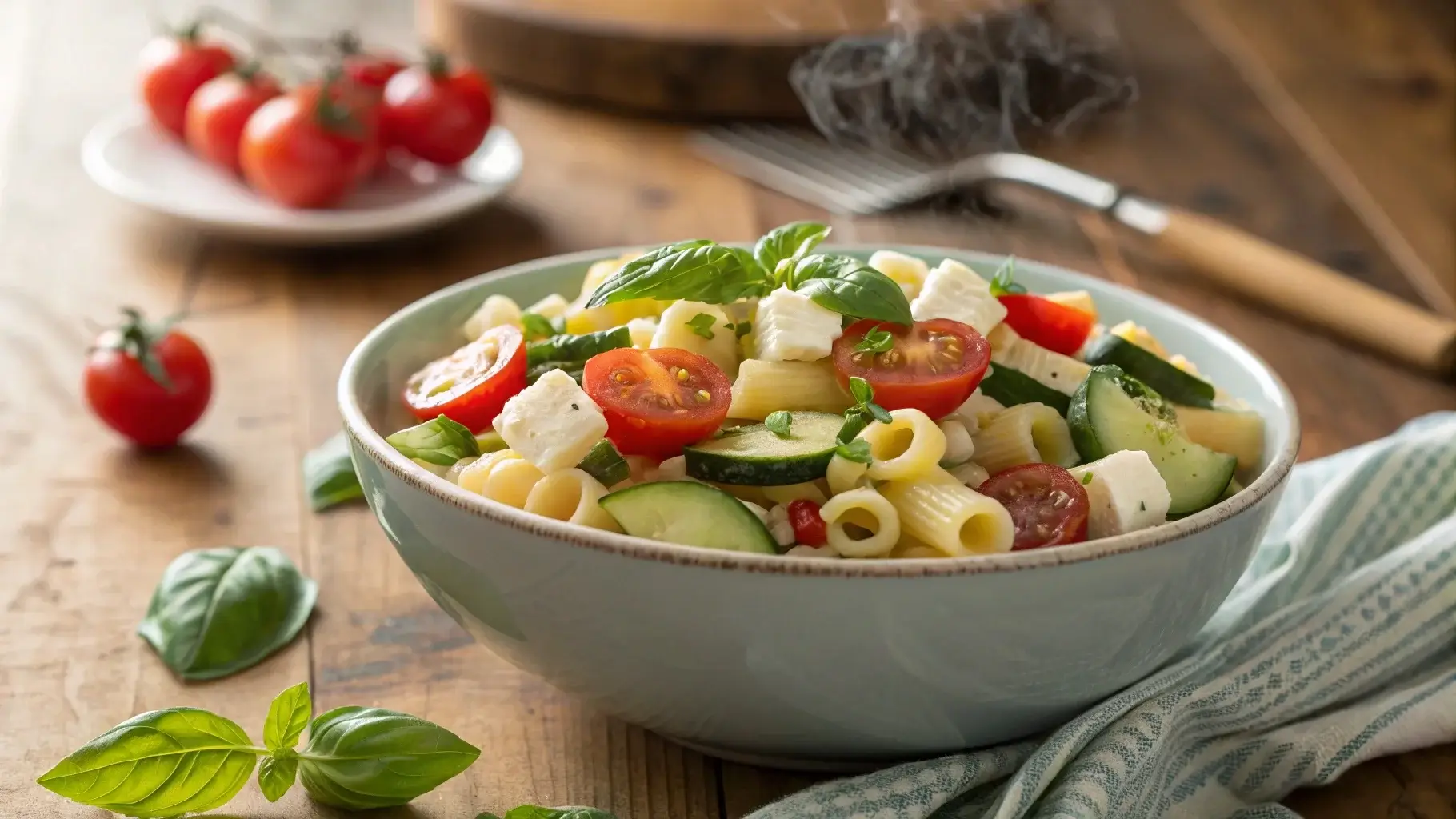When it comes to pasta, there’s something magical about the tiny yet mighty ditalini pasta. This short tube-shaped pasta is a favorite in kitchens worldwide because of its versatility and ability to pair beautifully with soups, salads, sauces, and more. In this article, we’ll dive deep into the world of ditalini pasta recipes, exploring its history, essential ingredients, step-by-step instructions, creative variations, and serving tips. Whether you’re a seasoned cook or just starting out, this guide will help you master the art of cooking ditalini like a pro.
To give you a taste of what’s ahead, let me share a little story. My husband Momo and I decided to try making our first ditalini pasta recipe one rainy afternoon. It wasn’t perfect—Momo overcooked the pasta slightly, and I added too much salt—but the end result was still delicious! That experience taught us that even small mistakes can lead to big flavors when it comes to cooking. Now, let’s get started!
Table of Contents
Introduction to Ditalini Pasta Recipe
What Makes Ditalini Pasta Unique?
Ditalini pasta stands out due to its compact size and hollow shape, which makes it ideal for capturing flavorful sauces, broth, or dressings. Unlike longer pastas like spaghetti or fettuccine, ditalini works wonders in dishes where smaller pieces are preferred, such as minestrone soup or creamy pasta salads. Its texture also holds up well during prolonged cooking, making it a go-to choice for slow-cooked meals.
This humble pasta has gained popularity not only for its functionality but also for its adaptability. From classic Italian recipes to modern twists, ditalini pasta recipes offer endless possibilities for creativity in the kitchen.
Why Ditalini is Perfect for Soups, Salads, and More
Whether you’re whipping up a comforting bowl of chicken noodle soup or preparing a refreshing summer salad, ditalini fits right in. Its bite-sized nature ensures every spoonful delivers a balanced mix of flavors and textures. Plus, it cooks quickly, saving time without compromising quality. With so many ways to enjoy it, it’s no wonder ditalini pasta recipes have become a staple in home kitchens everywhere!
Essential Ingredients for Your Ditalini Pasta Recipe
Key Ingredients That Make This Recipe Stand Out
To create an authentic ditalini pasta recipe, you’ll need a few essential ingredients. Start with high-quality ditalini pasta itself—look for durum wheat semolina options for superior texture and flavor. Pair it with complementary ingredients like fresh vegetables, herbs, and proteins depending on your dish type. For soups, consider carrots, celery, tomatoes, and chicken or vegetable broth. In salads, cherry tomatoes, cucumbers, bell peppers, and feta cheese work beautifully.
A flavorful sauce or dressing ties everything together. Tomato-based sauces, creamy Alfredo, or tangy vinaigrettes enhance the taste profile of ditalini pasta recipes. Don’t forget seasonings! Garlic powder, dried oregano, basil, and black pepper add depth without overpowering the dish.
Substitutions for Common Ingredients
Not everyone sticks to tradition, and substitutions can elevate your ditalini pasta recipe. Swap regular pasta for whole grain or gluten-free alternatives if needed. Use plant-based milk or yogurt in creamy sauces for vegan-friendly versions. Experimentation opens doors to new and exciting possibilities, ensuring everyone at the table enjoys their meal.
Sausage, cabbage, and hearty greens can be great additions to elevate your ditalini pasta recipe. For a warm and comforting twist, you can’t miss this Cabbage and sausage comfort food dish that pairs beautifully with short pasta.
Step-by-Step Guide to Making Ditalini Pasta Recipe
Preparing the Ingredients
Before diving into your ditalini pasta recipe, preparation is key. Start by gathering all your ingredients—whether you’re making a soup, salad, or casserole. If using fresh vegetables, chop them into bite-sized pieces for even cooking. For soups, heat your broth in a large pot while preparing other components. In salads, whisk together your dressing ahead of time so flavors meld.
For the pasta itself, measure out the correct amount based on serving sizes. Remember, ditalini cooks quickly, so timing is crucial to avoid overcooking.
Cooking Techniques for Perfect Results
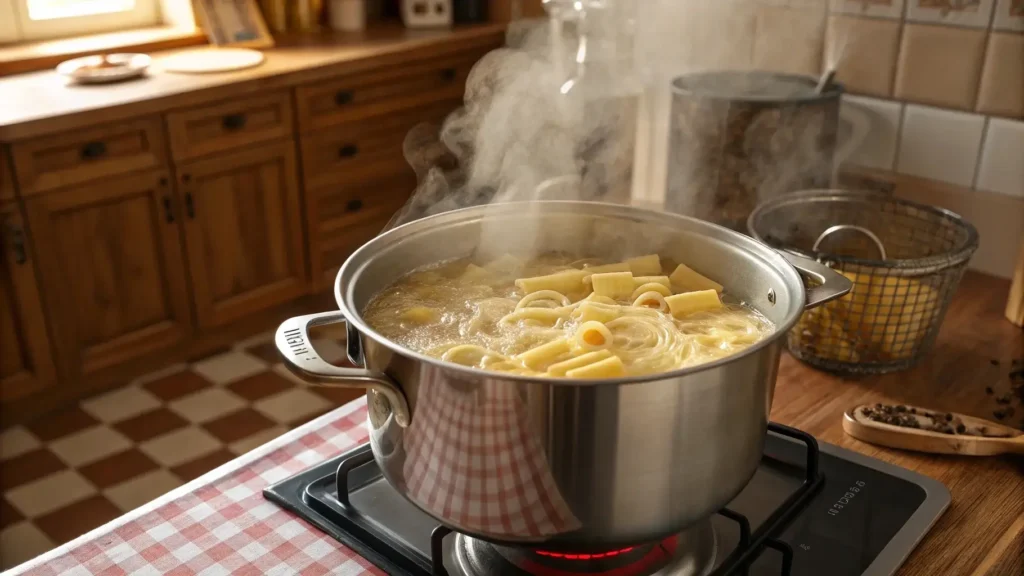
Bring a pot of salted water to a boil before adding the ditalini. Cook according to package instructions, usually around 8–10 minutes, until al dente. Drain thoroughly and rinse under cold water if using in a salad to stop the cooking process. For soups, add the cooked ditalini directly to the broth during the last few minutes of simmering to prevent it from becoming mushy.
If baking a casserole, preheat your oven as instructed in your chosen recipe. Combine cooked ditalini with sauce, cheese, or other ingredients in a greased baking dish. Top with breadcrumbs or grated Parmesan for added crunch.
Combining Everything Together
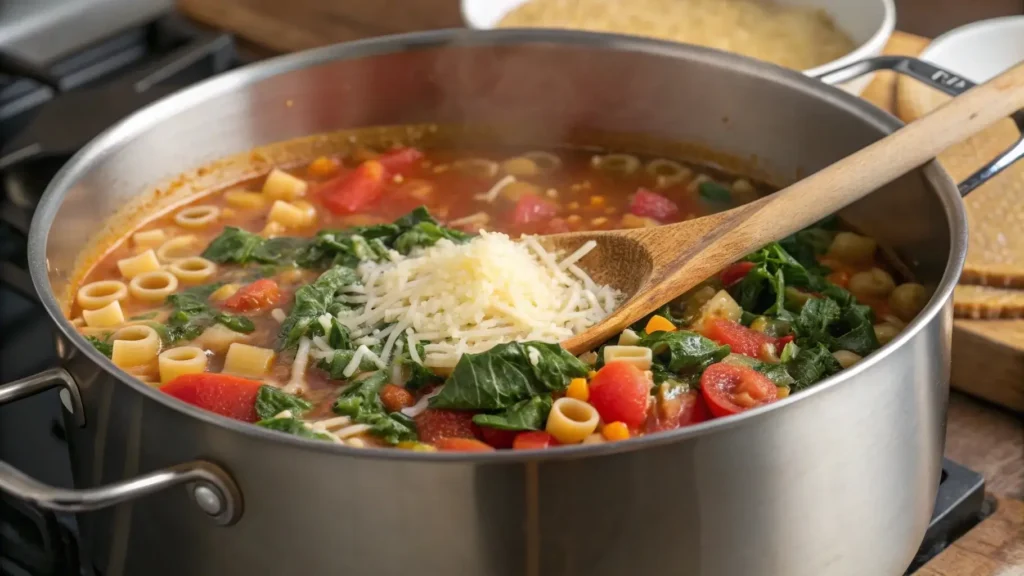
Once all elements are ready, combine them thoughtfully. For example, toss warm ditalini with vinaigrette for a vibrant pasta salad or layer it with marinara sauce and mozzarella for a comforting baked dish. Stir gently to ensure even distribution of flavors. Let the mixture sit for a few minutes before serving to allow the pasta to absorb surrounding liquids.
Variations of the Ditalini Pasta Recipe
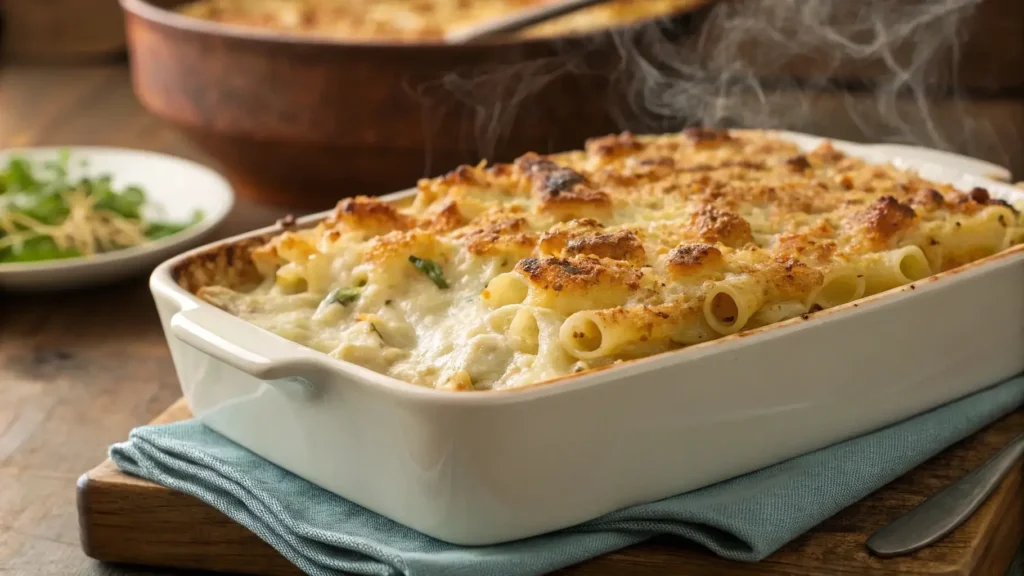
Adding Extra Flavors and Textures
One of the joys of working with ditalini pasta recipe is its versatility. Experiment with different flavor profiles by incorporating smoked paprika, red pepper flakes, or nutritional yeast for a cheesy taste in vegan dishes. Fresh herbs like parsley, basil, or thyme elevate any variation effortlessly.
Gluten-Free and Vegan Options
To cater to dietary preferences, swap traditional ditalini for gluten-free alternatives made from rice, corn, or quinoa. These options retain the same texture and pair well with most sauces. Similarly, veganize your ditalini pasta recipe by replacing dairy products with plant-based substitutes like almond milk or cashew cream. Add nuts or seeds for extra protein and crunch. With these adjustments, everyone can enjoy this classic Italian delight!
If you’re craving a heartier meal, consider adding meats like steak or sausage to your ditalini pasta. For inspiration, try these flavorful Steak pasta recipes that bring bold textures to your dish.
Tips for Amateur and Advanced Cooks to Perfect Ditalini Pasta Recipe
Beginner-Friendly Tips for Making Ditalini Pasta Recipe
If you’re new to cooking with ditalini pasta recipe, start by focusing on the basics. Always use plenty of salted water when boiling the pasta—it enhances the flavor significantly. Follow the recommended cooking time closely to ensure the perfect al dente texture. When preparing soups, add the ditalini toward the end of cooking to prevent it from becoming overly soft. For salads, rinse the cooked pasta under cold water immediately after draining to stop the cooking process and keep it firm.
Additionally, don’t hesitate to taste as you go. Seasoning is key, so adjust salt, pepper, or herbs according to your preference. Start simple—classic tomato sauce or a light vinaigrette pairs beautifully with ditalini—and build confidence before experimenting with more complex recipes.
Advanced Techniques for Mastering Ditalini Pasta Recipe
For seasoned cooks, adding unique twists takes this dish to the next level. Try incorporating unconventional ingredients like truffle oil, roasted red peppers, or caramelized onions for depth. To elevate soups, simmer homemade stock instead of store-bought broth for richer flavors. In baked dishes, layer ditalini with creamy sauces and grated Parmesan for a golden crust.
Experiment with different types of ditalini, such as whole-grain or gluten-free varieties, to cater to various dietary needs without sacrificing taste. These small adjustments can transform your already delicious ditalini pasta recipe into something truly remarkable.
Tips for Perfecting Your Ditalini Pasta Recipe
Common Mistakes to Avoid
When making a ditalini pasta recipe, there are a few common pitfalls to watch out for. One of the biggest mistakes is overcooking the pasta, which can lead to a mushy texture. Always follow the cooking time on the package and taste-test frequently. Another issue arises when adding ditalini directly to soup too early; this can cause it to become overly soft by the time the dish is served. To avoid this, add the pasta during the last 5–10 minutes of cooking.
Additionally, not seasoning the water properly before boiling the ditalini can result in bland flavors. Remember, well-seasoned water enhances the overall taste of your dish. Lastly, overcrowding the pot while boiling can cause uneven cooking, so make sure you use enough water.
Techniques for Better Texture and Flavor
To achieve the perfect texture, drain the ditalini as soon as it reaches al dente. If using in salads, rinse under cold water immediately to stop the cooking process. For soups or casseroles, reserve some pasta water to adjust consistency if needed. Adding fresh herbs at the end of cooking brings vibrant aroma and flavor to your ditalini pasta recipe.
Serving Suggestions for Ditalini Pasta Recipe
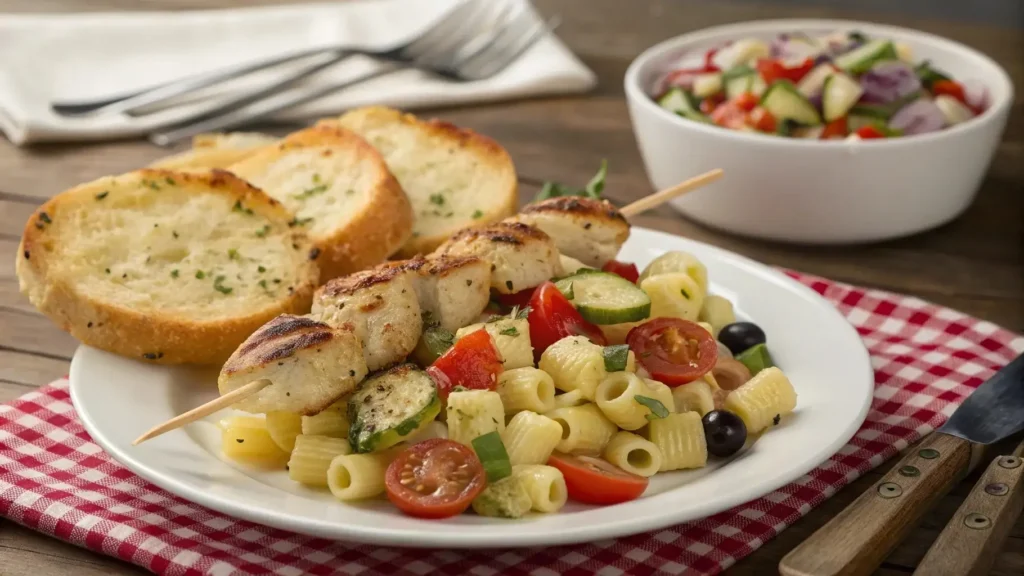
Pairing Ideas for a Complete Meal
Your ditalini pasta recipe pairs beautifully with simple sides to create a satisfying meal. Serve creamy ditalini dishes alongside a crisp green salad dressed with lemon vinaigrette for balance. A loaf of garlic bread complements rich tomato-based sauces perfectly. For lighter options, pair ditalini salads with grilled chicken or roasted vegetables.
Creative Ways to Serve Ditalini Pasta
Thinking outside the box can elevate your dish even further. Stuff bell peppers with cheesy ditalini mixtures for a fun presentation, or use mini muffin tins to bake individual portions. No matter how you serve it, this versatile pasta guarantees delight!
FAQs about Ditalini Pasta
Can I Substitute Ditalini Pasta with Another Type of Pasta?
Absolutely! While ditalini pasta recipe is uniquely suited for soups, salads, and casseroles due to its small size, you can substitute it with other short-cut pastas like elbow macaroni or tubettini. However, keep in mind that the texture and absorption capabilities may differ slightly.
Is Ditalini Pasta Gluten-Free?
Traditional ditalini pasta is not gluten-free, as it’s made from wheat flour. If you’re looking for a gluten-free option, many brands now offer alternatives made from rice, corn, or quinoa. These work perfectly in most ditalini pasta recipes.
How Long Does Cooked Ditalini Pasta Last in the Fridge?
Cooked ditalini pasta stays fresh for about 3–4 days when stored in an airtight container in the refrigerator. Reheat gently in sauce or broth to restore its texture.
What Are Some Popular Dishes Made with Ditalini Pasta?
Some classic dishes include minestrone soup, creamy Alfredo pasta salad, and baked zucchini-ditalini casserole. Experiment with different flavors to find your favorite!
Why You Should Try This Recipe Today
Whether you’re craving comfort food or seeking inspiration for quick weeknight meals, the ditalini pasta recipe delivers versatility and flavor in every bite. Its adaptability makes it suitable for soups, salads, casseroles, and more. With just a little creativity, you can transform this humble pasta into something extraordinary. So gather your ingredients, follow these tips, and let your culinary journey begin. Once you taste the results, you’ll wonder why you didn’t try this sooner!
